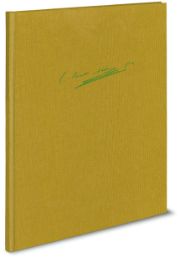The unknown acquaintance
An international edition project under the umbrella of the Bärenreiter publishing house is reissuing the instrumental works of Camille Saint-Saëns. Of the planned 39 volumes, our reviewer took a look at the one with the "Poèmes symponiques".

"Saint-Saëns has achieved the rare fame of being considered a classic in his own lifetime." This was written by the French writer and music critic Romain Rolland in 1901, at a time when Camille Saint-Saëns was to live and create for another two decades. At the same time, Rolland pointed out how difficult the critics had found Saint-Saëns' music, how irreconcilably opposed the protagonists of the Ars gallica, the French school, on the one hand, and the Wagnerians around the Franck pupil Vincent d'Indy on the other. This makes the sober self-image of the composer, who retained his creative and stylistic independence, all the more remarkable: "I am not very receptive to criticism and praise, not out of an exaggerated sense of self, which would be stupidity; but since I produce works to fulfill a function of my nature, just as an apple tree produces apples, I need not worry about the opinion that may be expressed about me."
Personal strokes of fate also left Saint-Saëns silent as a person over the decades. When he finally died in Algiers on December 16, 1921 at the age of 86, he had not only outlived himself musically, but also in the perception of his contemporaries. To this day, he has therefore remained one of the composers who are as great as they are unknown: On the one hand, there is the Carnaval des animaux and the so-called Organ symphony (both from 1886), perhaps also two of the five piano concertos, the first concerto for violoncello and the third for violin, the Danse macabre and the opera Samson et Dalila - However, his other twelve (!) operas, orchestral songs, choral works, almost all of his chamber music and a whole tableau of orchestral works are still completely unknown.
This is where the international edition project Œuvres instrumentales complètes on: While operas and other vocal works will find it difficult to find their way into today's almost complete repertoire (and represent a hardly foreseeable risk from a publishing perspective), it should be easier to finally perceive Saint-Saëns comprehensively as a composer in the concert hall without sometimes dubious texts and contexts and without language barriers. There is no need to emphasize how necessary new printed editions are for this: Not only do they make the works reliably accessible, but the overview as a whole invites a deeper examination in order to overcome topoi of reception. There are plans for 39 volumes in four series - five have been published so far, including the one with the Poèmes symphoniqueswhich contains works that were once celebrated but are now almost unheard of: Alongside Danse macabre these are Le Rouet d'Omphale, Phaéton and La Jeunesse d'Hercule. Following in the footsteps of Berlioz and Liszt, Saint-Saëns does not compete ideologically with the symphonic genre, but complements it in his own unique way - enabling imaginative, motivically bound invention and opening up ample scope for outstanding, colorful orchestration.
Edited by Hugh Macdonald, the volume is accompanied by a comprehensive trilingual preface by Michael Stegemann, which invites the reader to read and listen. Clean typesetting and precise printing are in keeping with the consistently high standard of the Bärenreiter Complete Editions. The tasteful cloth binding also lends the whole that aesthetic weight which is always lacking in practical scores.
Camille Saint-Saëns: Œuvres instrumentales complètes, vol. I/4: Poèmes symphoniques, edited by Hugh Macdonald, score, BA 10307-01, € 378.00, Bärenreiter, Kassel









